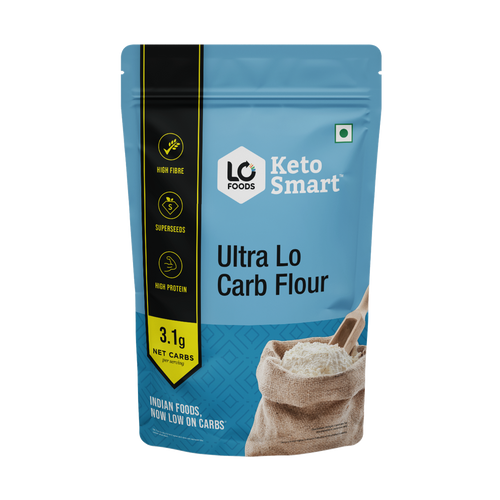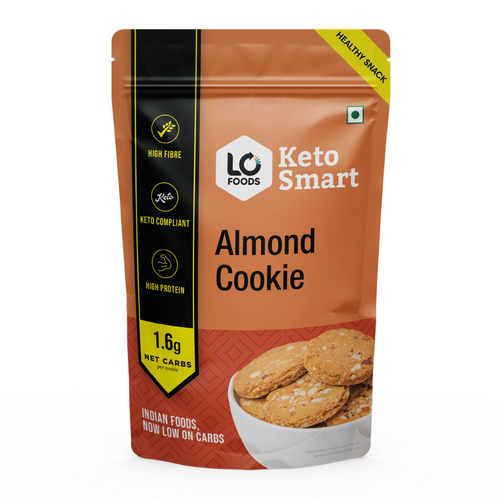
Does wheat contain carbohydrates?
Carbs are like the gas that keeps our bodies going smoothly. They're super important in our everyday diets because they give us the energy we need to do stuff. These natural compounds are the main thing that helps us run our bodies, doing lots of important jobs. When it comes to eating right, knowing why carbs matter is key to staying healthy.
Now, let's focus on wheat and how it fits into this carb story. Wheat is a common food in many places, and the carbs in it give us a big chunk of the energy we need every day. This talk is all about showing why carbs, especially the ones in wheat, are crucial for keeping us healthy. Come along as we explore the nutrition world, uncovering how carbs play a big role in making sure we stay well.

Nutritional Composition
Overall nutritional value of wheat flour per 3.5 ounce:
Component |
Amount |
Protein |
15g |
Dietary Fiber |
10.6g |
Carbohydrates |
71.2g |
Calcium |
38mg |
Magnesium |
136mg |
Phosphorus |
352mg |
Potassium |
376mg |
Folate |
39mcg |
Niacin |
5.5mg |
Health Benefits
Energy Source: Provides a quick and sustained energy supply for daily activities and bodily functions.
Supports Physical Activity: Fuels muscles during exercise and enhances athletic performance.
Brain Function: Supplies glucose, essential for cognitive functions like thinking, learning, and memory.
Spares Protein: Prevents the use of protein for energy, allowing it to be used for muscle repair and growth.
Digestive Health: Contains fiber, which promotes healthy digestion and prevents constipation.
Satiety: High fiber content helps in feeling full longer, aiding in weight management.
Blood Sugar Regulation: Slow-digesting carbs, especially in whole wheat, help maintain stable blood sugar levels.
Nutrient-Rich: Whole wheat is rich in essential vitamins and minerals, contributing to overall health.
Heart Health: Fiber in whole wheat can help lower cholesterol levels, reducing the risk of heart disease.
Gut Health: Promotes a healthy gut microbiome due to its fiber content.
Carbs in Wheat Variety
Wheat Type |
Carbohydrates (per 100g) |
|---|---|
Whole Wheat (uncooked) |
72.6g |
Whole Wheat Flour |
72.6g |
White Wheat Flour |
76.3g |
Bulgur Wheat (cooked) |
18.6g |
Couscous (cooked) |
23.2g |
Durum Wheat (uncooked) |
71.2g |
Semolina (uncooked) |
72.8g |
Spelt (uncooked) |
70.2g |
Einkorn Wheat (uncooked) |
71.1g |
Emmer Wheat (uncooked) |
70.6g |
Kamut (Khorasan wheat, uncooked) |
68.0g |
Farro (uncooked) |
70.4g |
Comparison with Other Grains
Grain/Pulse Type |
Carbohydrates (per 100g) |
|---|---|
Whole Wheat (uncooked) |
72.6g |
White Rice (cooked) |
28.6g |
Brown Rice (cooked) |
23.5g |
Barley (uncooked) |
73.5g |
Oats (uncooked) |
66.3g |
Cornmeal (uncooked) |
73.0g |
Breakfast Cereal |
65.0g - 90.0g* |
Lentils (cooked) |
20.1g |
Chickpeas (cooked) |
27.4g |
Maize (corn, uncooked) |
74.3g |

Choosing the right wheat
Wheat has a bunch of complex energy stuff that keeps us going strong. Different wheat products have different kinds and amounts of this energy stuff. Whole wheat is a good choice because it has more fiber and nutrients, which is good for our health.
One popular form of wheat flour is Atta which is used to make a majority of staple foods in the Indian kitchen. Chapatis and Rotis despite being nutritious becomes a little complicated for diabetics or people who are on a weight loss journey. Choosing the right Atta is important, which is why Lo foods has an Ultra low carb atta that would help you enjoy your delicious meals at home, guilt free.
If we compare wheat with other grains like rice and barley, each has its own nutritional perks. Knowing these differences helps us pick what's best for our diet and health. Thinking bigger, knowing about the energy stuff in our food is crucial for a healthy life. Carbs, which are the main energy source, help us do our daily activities. Whether it's the slow energy from whole wheat or the balanced one in barley, having a mix of grains is great for a well-rounded and healthy diet.
FAQs
-
Does wheat contain carbohydrates?
Yes, wheat contains carbohydrates.
-
Are carbohydrates found in wheat healthy?
Carbohydrates found in whole wheat are a good source of energy and important nutrients.
-
How much carbohydrates are in a serving of wheat?
The amount of carbohydrates in wheat can vary but is typically around 30-40 grams per serving.
-
Can people with diabetes consume wheat due to its carbohydrate content?
People with diabetes can still incorporate wheat into their diet, but should monitor their carbohydrate intake and choose whole grain options.
-
Is wheat gluten-free due to its carbohydrates?
No, wheat contains gluten, which is a protein and not related to its carbohydrate content.
This Blog post is an initiative by Lo! Foods, to provide accurate and Nutritionist / Doctor approved information related to Health. Lo! Foods is India's leading brand for Everyday Functional Foods. Foods designed for specific Health conditions or Needs. Lo! Foods also runs India's largest range of Low Carb Healthy Cloud Kitchens, under the brand names of Lo!, ProteinChef, ATH (All Things Healthy) and DiabeSmart.















Leave a comment
Your email address will not be published.